This is about designing a circuit that can control multiple LEDs synchronized to music or sound, as simply as possible. I am looking for some conceptual ideas to start out with, not a complete circuit design or anything.
My question is inspired by this YouTube video (now those are heels to kill for!)
I have read the question Flash an LED to music but it does not begin to address a requirement like those shoes.
I realize that there are many different and increasingly complex ways of achieving the desired result, but I am looking for the simplest approach, even if it is not the cheapest, and not the most precise. Also, I am not looking for a ready-made pair of shoes that has this (though if there are any, would be interesting to know about them).

